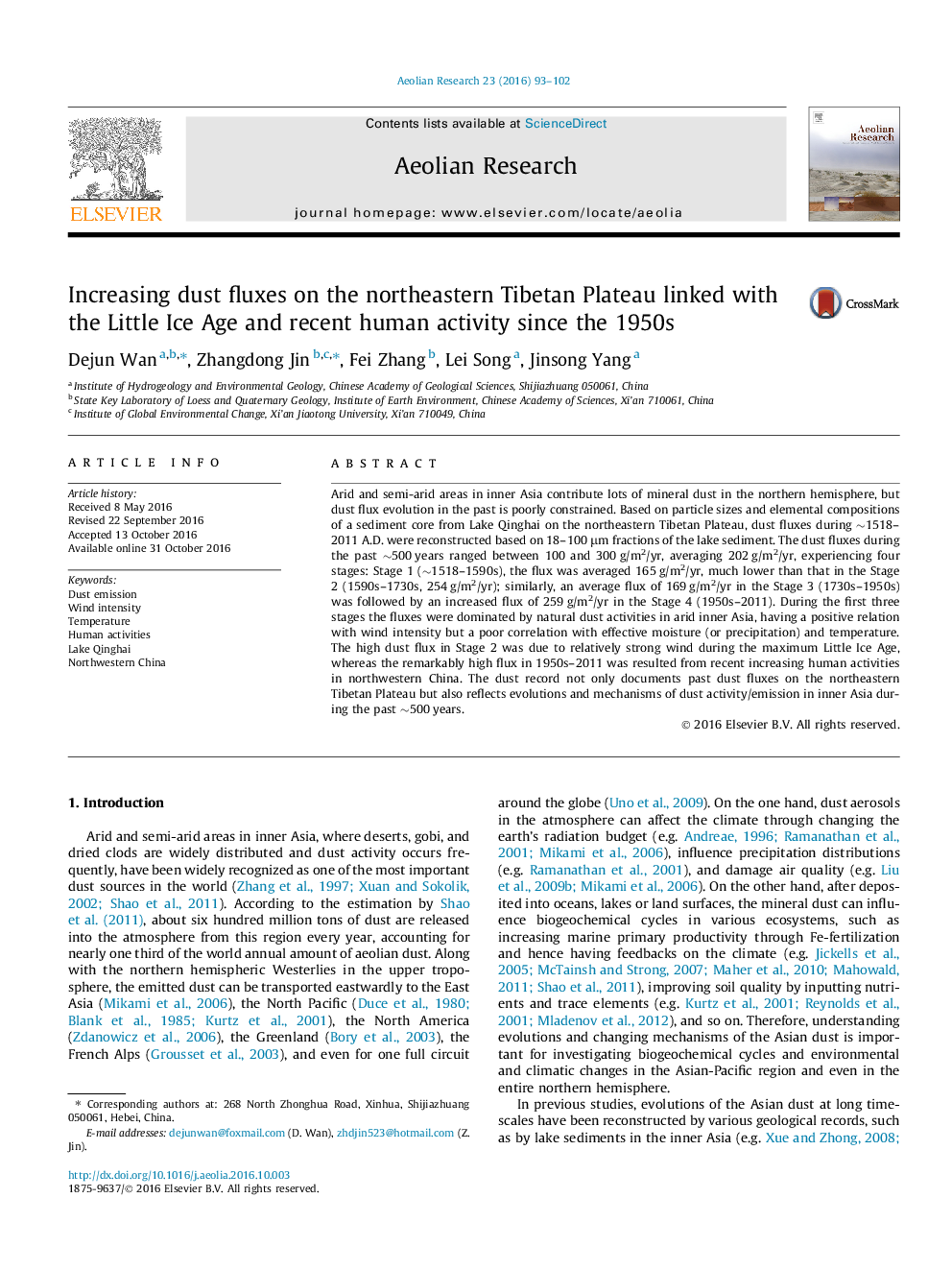| کد مقاله | کد نشریه | سال انتشار | مقاله انگلیسی | نسخه تمام متن |
|---|---|---|---|---|
| 6426219 | 1634105 | 2016 | 10 صفحه PDF | دانلود رایگان |
- Dust fluxes during â¼1518-2011 A.D. were reconstructed in Lake Qinghai.
- Before 1950s the dust flux was dominated by natural dust activity in inner Asia.
- Relatively high dust fluxes occurred at 1590s-1730s and at 1950s-2011.
- The high dust flux at 1590s-1730s related to strong wind intensity during the LIA.
- The increased dust at 1950s-2011 resulted from increased human activity in inner Asia.
Arid and semi-arid areas in inner Asia contribute lots of mineral dust in the northern hemisphere, but dust flux evolution in the past is poorly constrained. Based on particle sizes and elemental compositions of a sediment core from Lake Qinghai on the northeastern Tibetan Plateau, dust fluxes during â¼1518-2011 A.D. were reconstructed based on 18-100 μm fractions of the lake sediment. The dust fluxes during the past â¼500 years ranged between 100 and 300 g/m2/yr, averaging 202 g/m2/yr, experiencing four stages: Stage 1 (â¼1518-1590s), the flux was averaged 165 g/m2/yr, much lower than that in the Stage 2 (1590s-1730s, 254 g/m2/yr); similarly, an average flux of 169 g/m2/yr in the Stage 3 (1730s-1950s) was followed by an increased flux of 259 g/m2/yr in the Stage 4 (1950s-2011). During the first three stages the fluxes were dominated by natural dust activities in arid inner Asia, having a positive relation with wind intensity but a poor correlation with effective moisture (or precipitation) and temperature. The high dust flux in Stage 2 was due to relatively strong wind during the maximum Little Ice Age, whereas the remarkably high flux in 1950s-2011 was resulted from recent increasing human activities in northwestern China. The dust record not only documents past dust fluxes on the northeastern Tibetan Plateau but also reflects evolutions and mechanisms of dust activity/emission in inner Asia during the past â¼500 years.
Journal: Aeolian Research - Volume 23, December 2016, Pages 93-102
